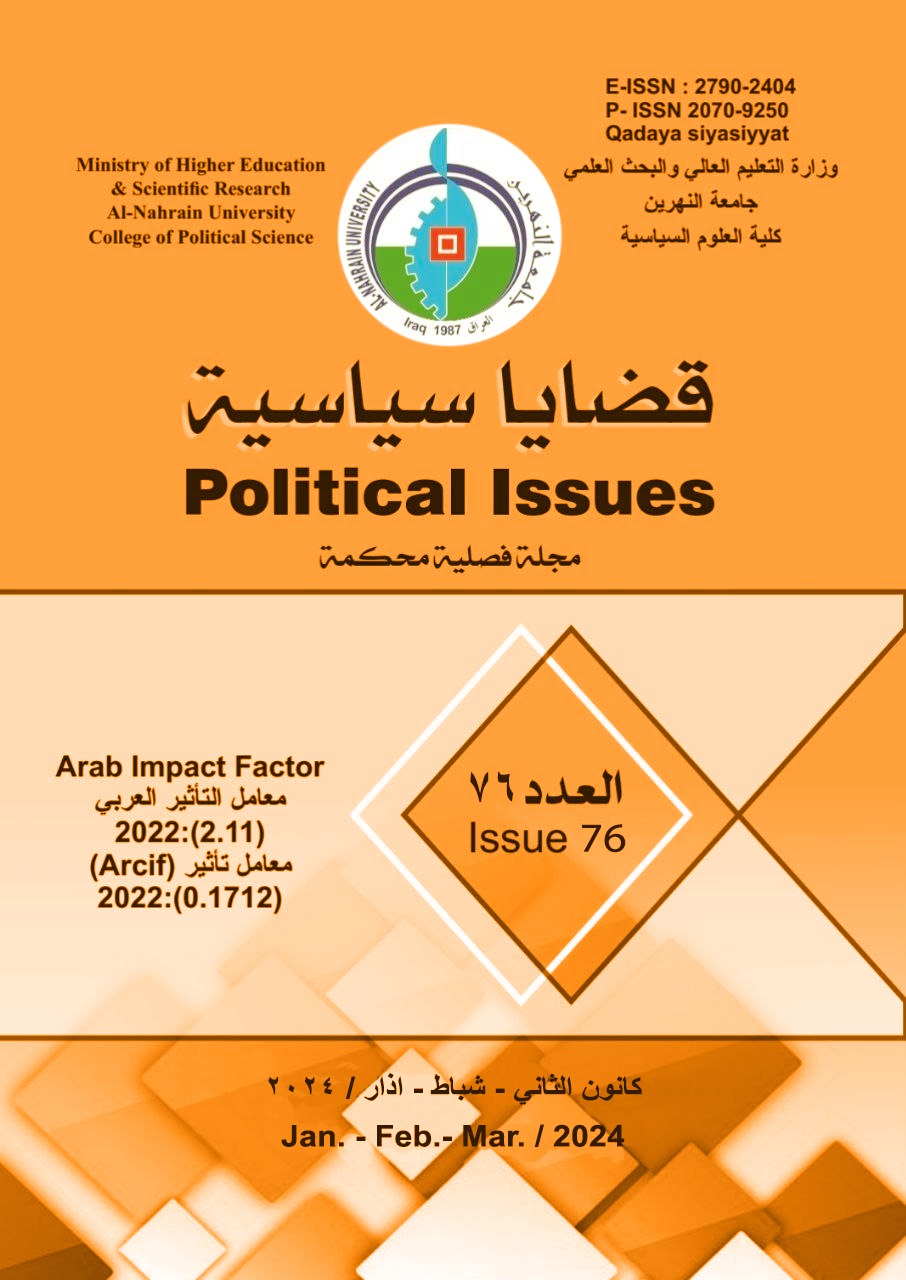Chinese foreign political behavior towards Iraq after 2003
DOI:
https://doi.org/10.58298/762024575Keywords:
Goals of Chinese Foreign Policy, , Lebanon, China, evaluation of the Iraqi experienceAbstract
Six decades ago, and specifically since 1958, Iraq was associated with political and economic relations with the People's Republic of China, and after the US military occupation of Iraq in April 2003, China radically recalculated to ensure the continuation of its escalating interests in the countries of the Middle East in general, and in Iraq in particular. In order to study the Chinese foreign political behavior towards Iraq after 2003, the focus was on the general frameworks of the Chinese foreign political behavior towards Iraq, whether in the principles that control the formula of political relations or in the areas of practical application of this behavior, which was linked to a set of internal and external determinants that pertaining to Chinese affairs. This research also dealt with the objectives of Chinese foreign policy towards Iraq, especially after the uniqueness of the United States of America in international politics since the collapse of the Soviet Union in 1991 until now, which constituted a motive for the behavior of the Chinese decision-maker to balance China's relations with Iraq and with the United States of America, which imposed its authority on Iraq.
In the applied field, the economic field, and in particular the energy and trade sectors, took priority in China's foreign interests to develop its relations with Iraq during the past twenty years. This approach has achieved the continued development of China's relations with Iraq in all fields without arousing the ire of China's main competitor, the United States of America, which reflects part of the positive constants of China's foreign political behavior towards Iraq since 2003 until the present time.
Additional Files
Published
Issue
Section
License
Copyright (c) 2024 صالح عباس الطائي

This work is licensed under a Creative Commons Attribution 4.0 International License.
This is an Open Access article distributed under the terms of the creative commons attribution (CC BY) 4.0 international license which permits unrestricted use, distribution, and reproduction in any medium or format, and to alter, transform, or build upon the material, including for commercial use, providing the original author is credited.






